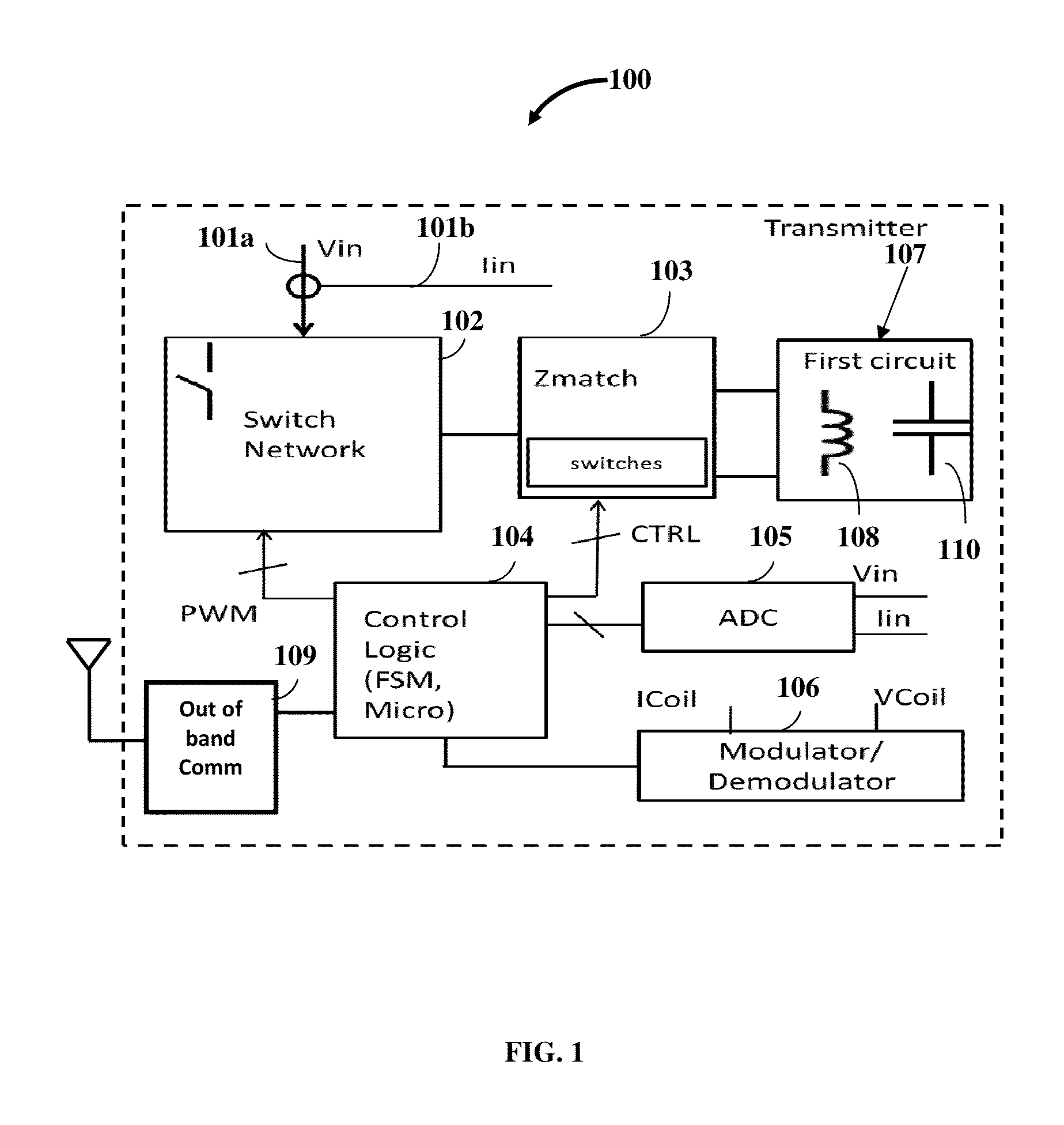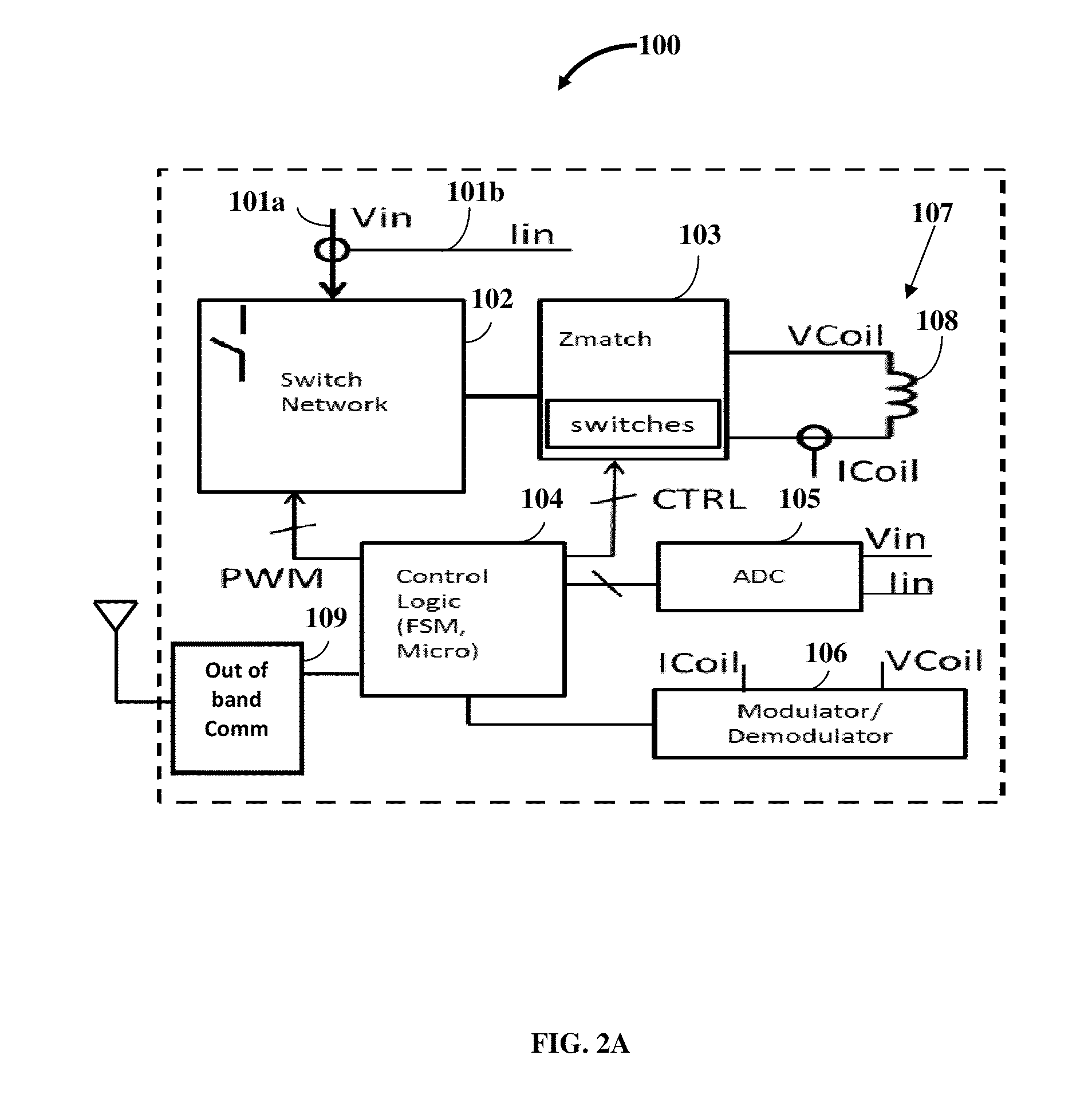Multi-mode Multi-coupling Multi-protocol Ubiquitous Wireless Power Transmitter
a multi-protocol, ubiquitous technology, applied in the direction of transformers, electromagnetic waves, inductances, etc., can solve the problems of weak power coupling linkage between power receivers wireless power receivers that cannot receive sufficient power to power up, etc., to achieve effective transmission of power
- Summary
- Abstract
- Description
- Claims
- Application Information
AI Technical Summary
Benefits of technology
Problems solved by technology
Method used
Image
Examples
Embodiment Construction
[0035]Disclosed herein is a multi-mode multi-coupling multi-protocol wireless power transmitter 100 exemplarily illustrated in FIG. 1, herein referred to as a “wireless power transmitter” that transmits power to a wireless power receiver (not shown) in a power transfer mode and a wireless power protocol matching that of the wireless power receiver. The wireless power transmitter 100 disclosed herein comprises a first circuit 107. The first circuit 107 comprises one or more inductors 108 and one or more capacitors 110. The first circuit 107 is configured to transmit power to the wireless power receiver via a magnetic field or an electric field. The magnetic field power transfer mode and the electric field power transfer mode represent the multiple power transfer modes of the wireless power transmitter 100.
[0036]FIG. 2A exemplarily illustrates a schematic diagram of a multi-mode multi-coupling multi-protocol wireless power transmitter 100 configured to emanate power via a magnetic fie...
PUM
 Login to View More
Login to View More Abstract
Description
Claims
Application Information
 Login to View More
Login to View More - R&D
- Intellectual Property
- Life Sciences
- Materials
- Tech Scout
- Unparalleled Data Quality
- Higher Quality Content
- 60% Fewer Hallucinations
Browse by: Latest US Patents, China's latest patents, Technical Efficacy Thesaurus, Application Domain, Technology Topic, Popular Technical Reports.
© 2025 PatSnap. All rights reserved.Legal|Privacy policy|Modern Slavery Act Transparency Statement|Sitemap|About US| Contact US: help@patsnap.com



